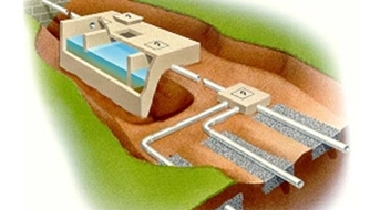
Septic systems are critical to managing wastewater for homes not connected to municipal sewer lines. They treat and dispose of household waste efficiently but are designed to handle specific types and quantities. Introducing excessive or inappropriate waste, such as sump pump discharge, can severely disrupt this delicate balance, leading to significant problems. This article explores why running a sump pump into a septic system is ill-advised and outlines the potential consequences of such a practice.
Overloading the Septic System: A sump pump typically removes water accumulating in a basement or crawl space, often due to rainfall or groundwater seepage. This water is not part of the household's typical wastewater load. When a sump pump discharges into a septic system, it adds a significant volume of water, potentially overloading it.
Septic systems are designed to handle a specific wastewater flow based on the household's size. Introducing excess water can exceed the system's capacity, leading to backups and potentially expensive repairs. Overloading can cause the septic tank to fill up more quickly, requiring frequent pumping and maintenance.
Dilution of Bacteria: The efficient operation of a septic system relies on a delicate balance of bacteria that breaks down solid waste. Sump pump water can dilute the concentration of these bacteria, hampering their ability to decompose waste effectively. When the bacterial action is reduced, solid waste can accumulate more quickly, potentially causing blockages and necessitating more frequent pumping and maintenance.
Increased Risk of System Failure: A septic system is designed with specific hydraulic and biological processes in mind. Adding sump pump discharge can disrupt these processes, increasing the risk of system failure. Excessive water can saturate the drain field, preventing proper percolation and leading to the pooling of untreated wastewater on the surface. This creates unpleasant odors and unsanitary conditions and can contaminate local water sources, posing health risks to the household and the surrounding community.
Potential Contamination of Groundwater: When a septic system is overloaded, there is a higher risk of untreated or partially treated wastewater seeping into the groundwater. This can lead to contamination of local wells and water supplies, posing severe health hazards. Pathogens, nitrates, and other pollutants from household waste can infiltrate drinking water sources, leading to waterborne illnesses and environmental damage.
Alternative Solutions
Homeowners should consider alternative solutions instead of injecting a sump pump into a septic system. These include:
- Direct Discharge: Route the sump pump discharge to a safe area away from the house and septic system, such as a storm drain or a dry well.
- Rain Gardens: Creating a rain garden can absorb and utilize excess water from the sump pump, providing an environmentally friendly solution.
- French Drains: Installing French drains can help manage excess water by directing it away from the house and into a designated area where it can be absorbed naturally.
Running a sump pump into a septic system may seem convenient, but it can lead to significant problems, including system overload, bacterial disruption, system failure, and groundwater contamination. Homeowners should explore alternative solutions to manage excess water effectively, ensuring their septic systems' longevity and proper functioning. By doing so, they protect their investment, the environment, and public health.
Schedule with us today! HouseMaster Serving Newport, Providence, RI, Fall River, MA, and Surrounding Areas, wants to ensure you have a well-maintained and safe home. We also provide radon testing, main drain sewer scans, and air quality mold testing.
Learn more about us at https://housemaster.com/Newport-Providence-RI-Fall-River-MA.
Authored by Lisa Miranda, owner of HouseMaster Home Inspections Serving Newport, Providence, RI, and Fall River, MA, dedicated to ensuring every home tells a story of safety, integrity, and timeless charm across time.
